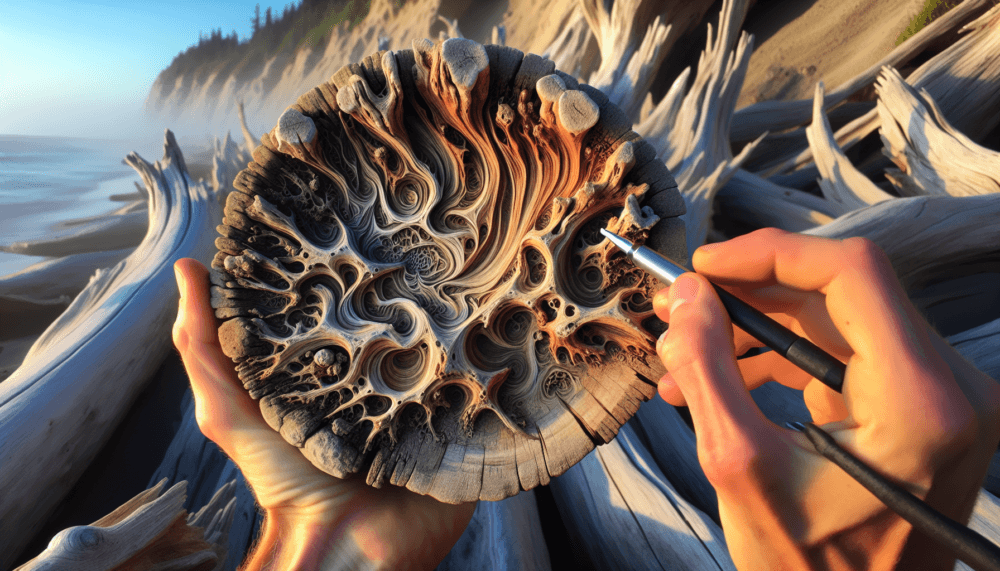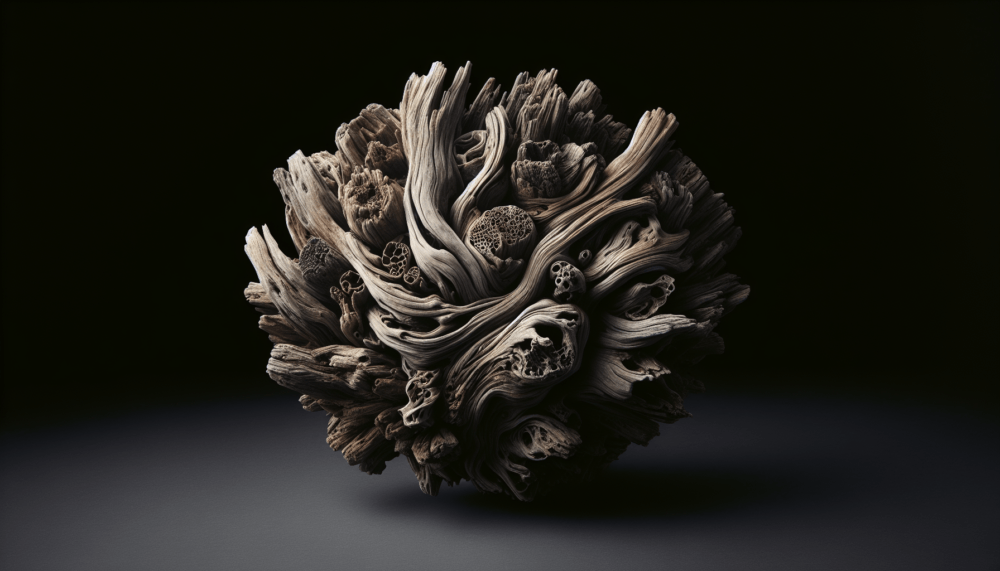You’re standing on the sandy shore with the crashing waves and salty breeze enveloping you, and you can’t help but feel drawn to the beauty of driftwood scattered across the beach. But where does it come from? In this article, we’ll explore the enchanting world of driftwood and uncover the secrets of where to find these unique and weathered treasures of nature. From hidden coves to remote islands, prepare to embark on a journey to discover the ultimate driftwood hotspots. So grab your beachcombing gear and let’s dive into the mesmerizing world of “Driftwood Where To Find?”

Benefits of Driftwood
Natural and unique appeal
One of the main benefits of driftwood is its natural and unique appeal. Each piece of driftwood has its own distinct shape, texture, and color, making it a captivating addition to any space. Whether you’re using it for home decor, landscaping, or art projects, driftwood adds a touch of natural beauty that is hard to replicate with other materials.
Environmentally friendly
Another notable benefit of driftwood is its environmentally friendly nature. Unlike freshly cut wood, driftwood requires no trees to be harvested, making it a sustainable option. By using driftwood instead of new wood, you can help conserve forests and minimize the carbon footprint associated with logging and transportation.
Versatile for different uses
Driftwood is incredibly versatile and can be used in a wide variety of ways. From small decorative pieces to large furniture items, driftwood can be transformed into functional and aesthetic objects. Its natural durability and weather resistance also make it suitable for both indoor and outdoor use. Whether you’re looking to add a rustic touch to your home or create a unique focal point in your garden, driftwood offers endless possibilities.
Types of Driftwood
Coastal driftwood
Coastal driftwood is found along beaches and shorelines, where the constant movement of waves and tides shapes and smooths the wood. It often comes from trees or drifts downstream from coastal forests or from trees that have fallen into the water.
River driftwood
River driftwood can be found along riverbanks, in riverbeds, and at bends and meander points. As rivers flow, they carry fallen trees and branches downstream, resulting in an accumulation of driftwood in certain areas. The constant water movement shapes the wood and gives it a distinct appearance.
Lake driftwood
Lake driftwood is typically found along lake shores and beaches, as well as in pier and dock areas. Similar to coastal and river driftwood, it is shaped by the movement of water. Lakeshores with rocky cliffs, islands, and peninsulas are often good places to find lake driftwood due to the natural accumulation caused by wind and waves.
Finding Driftwood in Forests
Riverbanks adjacent to forests
One way to find driftwood in forests is by exploring riverbanks adjacent to wooded areas. Fallen trees from the surrounding forest are often carried downstream during heavy rain or floods, ending up on the riverbanks. These logs and branches can then be gathered as driftwood.
Flooded and swampy areas
Flooded and swampy areas are also prime locations for finding driftwood in forests. Trees that have fallen into the water in these areas can become waterlogged and eventually drift downstream, settling along the banks. Exploring marshes, swamps, and other waterlogged sections of forests can yield a variety of driftwood pieces.
Trails near bodies of water
Trails that run alongside rivers, streams, or lakes can provide opportunities to find driftwood that has washed up onto the banks. Walking these trails allows you to scan the shoreline and collect any interesting driftwood pieces you come across. Just be sure to respect any rules or regulations regarding the removal of driftwood in these areas.
Finding Driftwood in Urban Areas
Construction sites and demolition areas
Urban areas undergoing construction or demolition often uncover hidden treasures in the form of driftwood. As old buildings are torn down or new ones are constructed, driftwood may be revealed and discarded. Keep an eye out for piles of debris or visit construction sites with permission to salvage any driftwood that catches your attention.
River or lakefront parks
Parks located along rivers or lakefronts are great places to find driftwood in urban areas. These parks often feature designated areas where driftwood naturally accumulates along the water’s edge. Take a stroll along the shoreline or participate in beach clean-up events to collect driftwood while enjoying the beauty of these urban outdoor spaces.
Waterfront property developments
Waterfront property developments, such as marinas or housing developments near bodies of water, can also be sources of driftwood in urban areas. Due to erosion and other factors, driftwood may wash up onto the shores of these developments. Check with property owners or management to inquire about collecting any driftwood that is deemed as debris.

Preparing Driftwood for Use
Cleaning and disinfecting
Before using driftwood for any purpose, it’s important to clean and disinfect it to remove any dirt, bacteria, or organisms that may be present. Start by rinsing the driftwood thoroughly with water and scrubbing it with a stiff brush to remove any loose debris. Then, soak the driftwood in a solution of bleach and water or a natural disinfectant for a period of time to kill any bacteria or parasites. Rinse the driftwood again and allow it to dry completely before proceeding.
Drying and curing
Once cleaned, the driftwood should be properly dried and cured before use. Place the driftwood in a well-ventilated area, preferably outdoors or near an open window. This will allow the wood to dry naturally, reducing the risk of mold or rot. Depending on the size and thickness of the driftwood, it may take several weeks or even months for it to fully dry and cure.
Treating and preserving
To ensure the longevity of your driftwood, it can be treated and preserved. Applying a wood sealant or a natural finish, such as linseed oil or beeswax, can help protect the driftwood from moisture, pests, and sun damage. Follow the instructions provided by the chosen sealant or finish and apply it evenly to all surfaces of the driftwood. Allow the treatment to dry completely before using the driftwood in your desired project.
Creative Uses for Driftwood
Home decor and furniture
Driftwood is a popular choice for creating unique and rustic home decor items. From wall art and table centerpieces to lamps and mirrors, driftwood can add a touch of natural elegance to any room. Additionally, larger pieces of driftwood can be transformed into eye-catching furniture pieces such as tables, chairs, and shelves. The natural curves and textures of driftwood lend themselves well to creating one-of-a-kind furniture that becomes a conversation piece in any home.
Landscaping and garden accents
Driftwood can be a fantastic addition to landscaping and garden design. It can be used to create borders, pathways, or even sculptures within your outdoor space. Combined with rocks, plants, and other natural elements, driftwood brings a unique and organic feel to gardens and outdoor areas. Additionally, driftwood can be used as planters, hanging structures, or as a sturdy base for climbing plants like ivy.
Crafts and art projects
For the creatively inclined, driftwood offers endless possibilities for crafts and art projects. Small driftwood pieces are perfect for creating jewelry, keychains, and mobiles. They can also be used in mosaics, mixed media artwork, or as embellishments on handmade cards and invitations. Larger driftwood branches and logs can be carved, painted, or sculpted to create stunning sculptures, installations, or even furniture pieces. The natural beauty of driftwood provides a unique foundation for artistic expression.
Safety Considerations
Avoid hazardous areas
When searching for driftwood, it’s important to prioritize your safety. Avoid areas that may pose hazards, such as steep cliffs, unstable shorelines, or locations near strong currents. Stick to well-marked paths and trails to minimize the risk of accidents or getting stranded.
Wear appropriate protective gear
When handling driftwood, it’s recommended to wear appropriate protective gear, especially when cleaning or working with power tools. This includes gloves, safety goggles, and a dust mask. Protecting yourself from splinters, sharp edges, and dust particles is essential to prevent injuries and ensure a safe working environment.
Be mindful of sharp edges and splinters
Driftwood can have sharp edges or splinters, so it’s important to handle it with care. Inspect each piece thoroughly for any potential hazards before using it. Sanding down rough edges and using a sealant or finish can help minimize the risk of splinters. Keep in mind that even treated driftwood may still have areas prone to splintering, so always exercise caution when handling it.
In conclusion, driftwood offers a myriad of benefits, from its natural and unique appeal to its environmental friendliness and versatility. Coastal, river, and lake driftwood can be found in various locations, such as beaches, riverbanks, and lake shores. Whether you’re exploring forests or urban areas, there are plenty of opportunities to discover driftwood. Before using it, be sure to properly prepare it by cleaning, drying, and treating, taking necessary safety precautions along the way. Once prepared, driftwood can be used to create stunning home decor, accentuate landscapes and gardens, and fuel your creativity through crafts and art projects. So go out, find some driftwood, and let your imagination run wild!